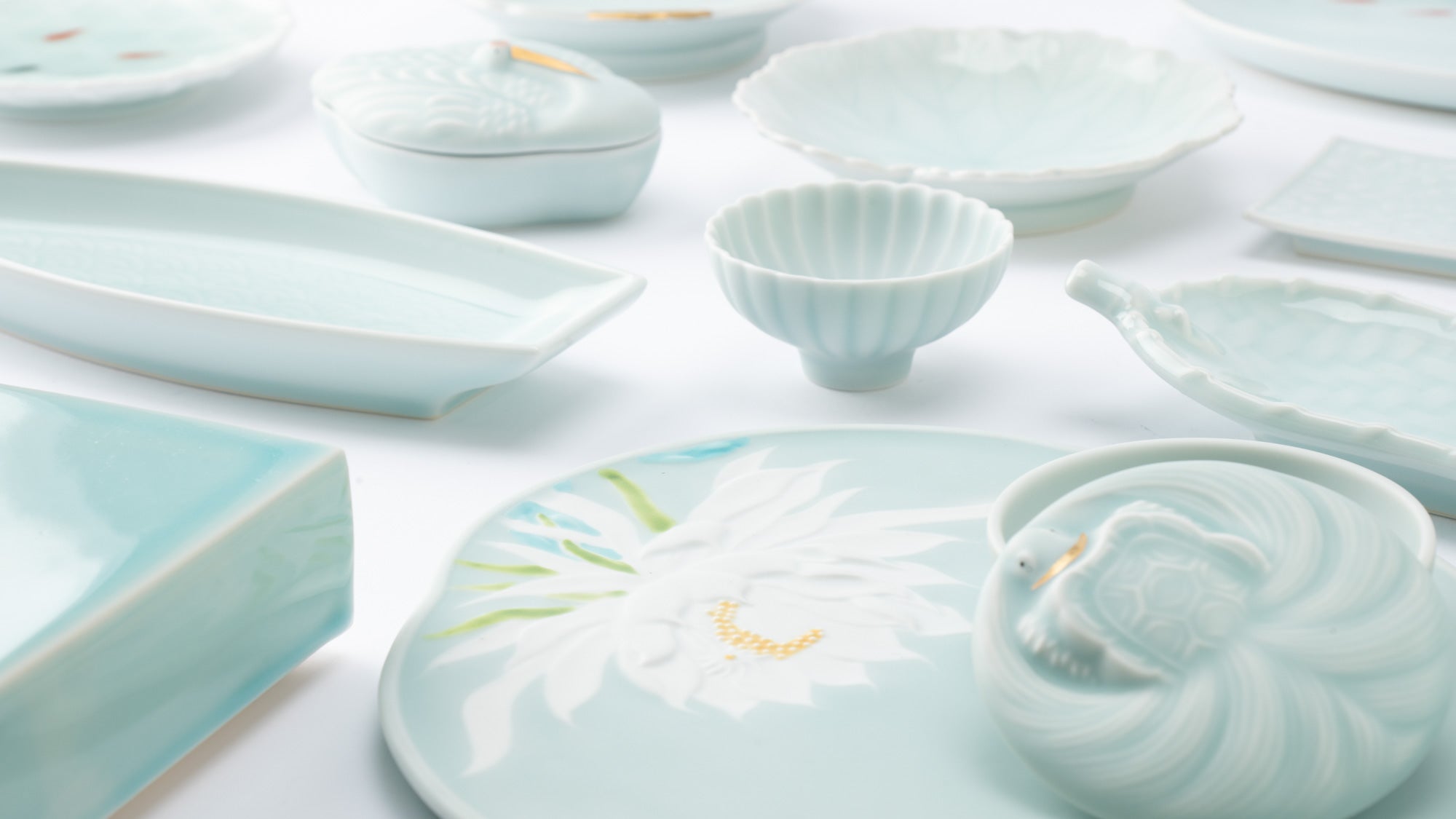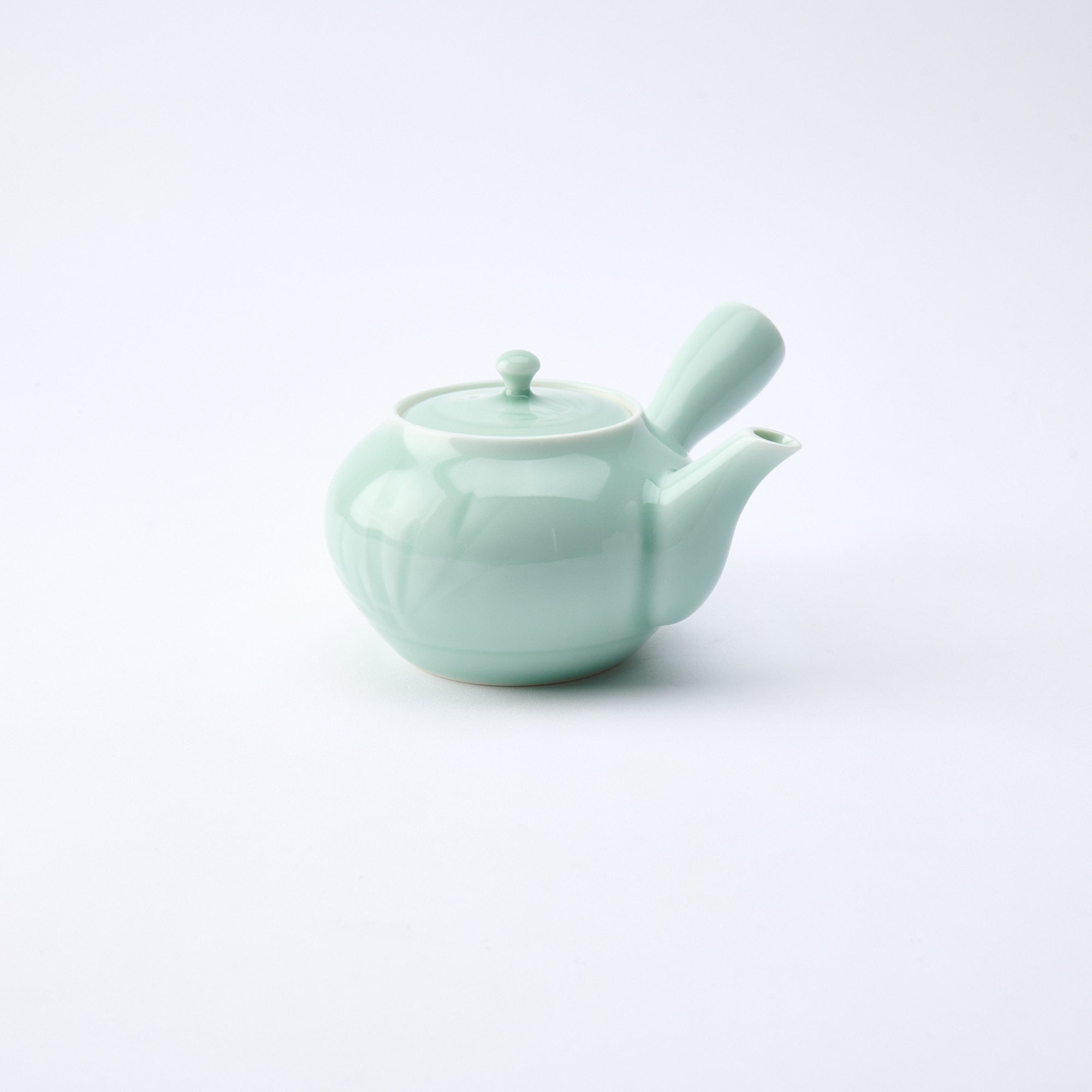
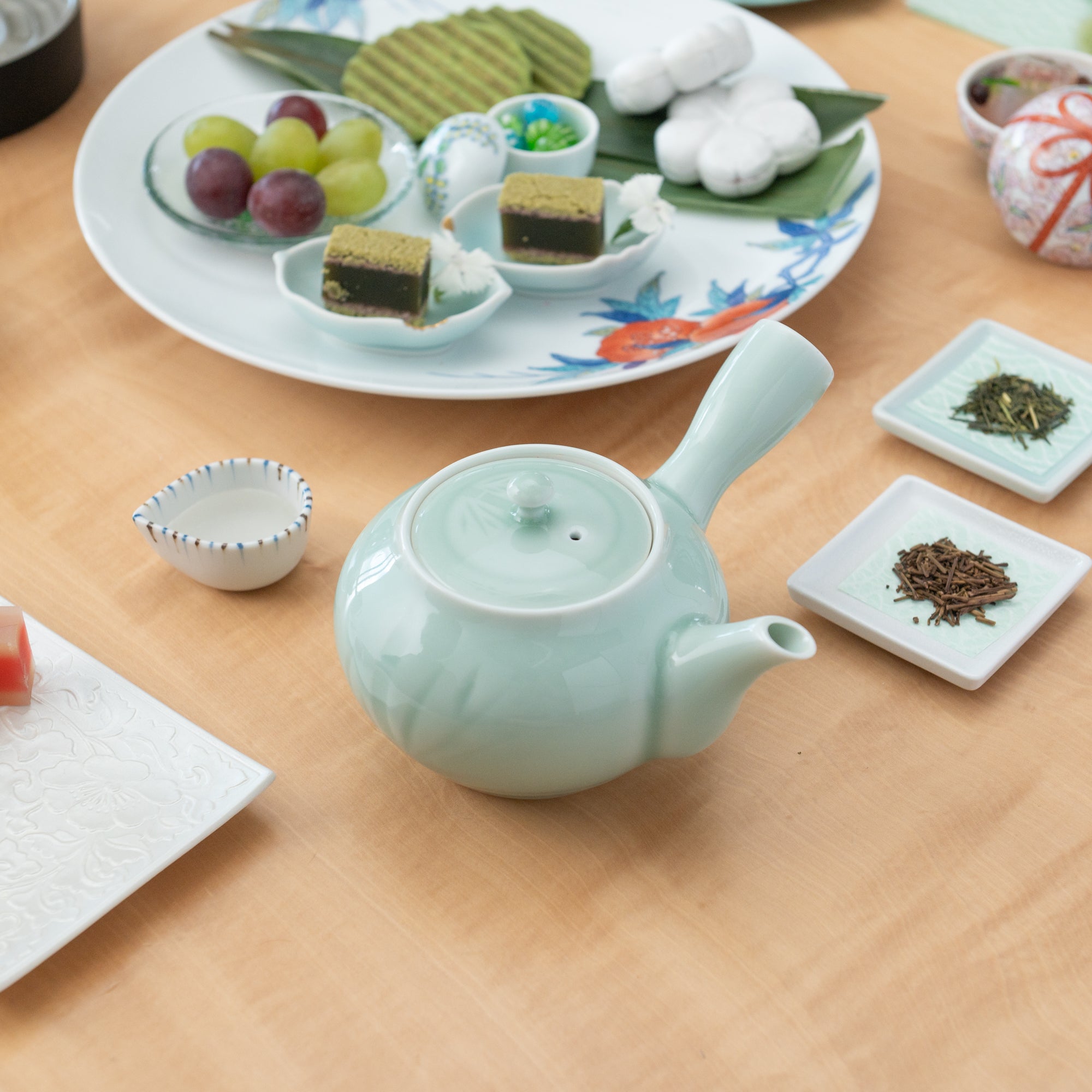

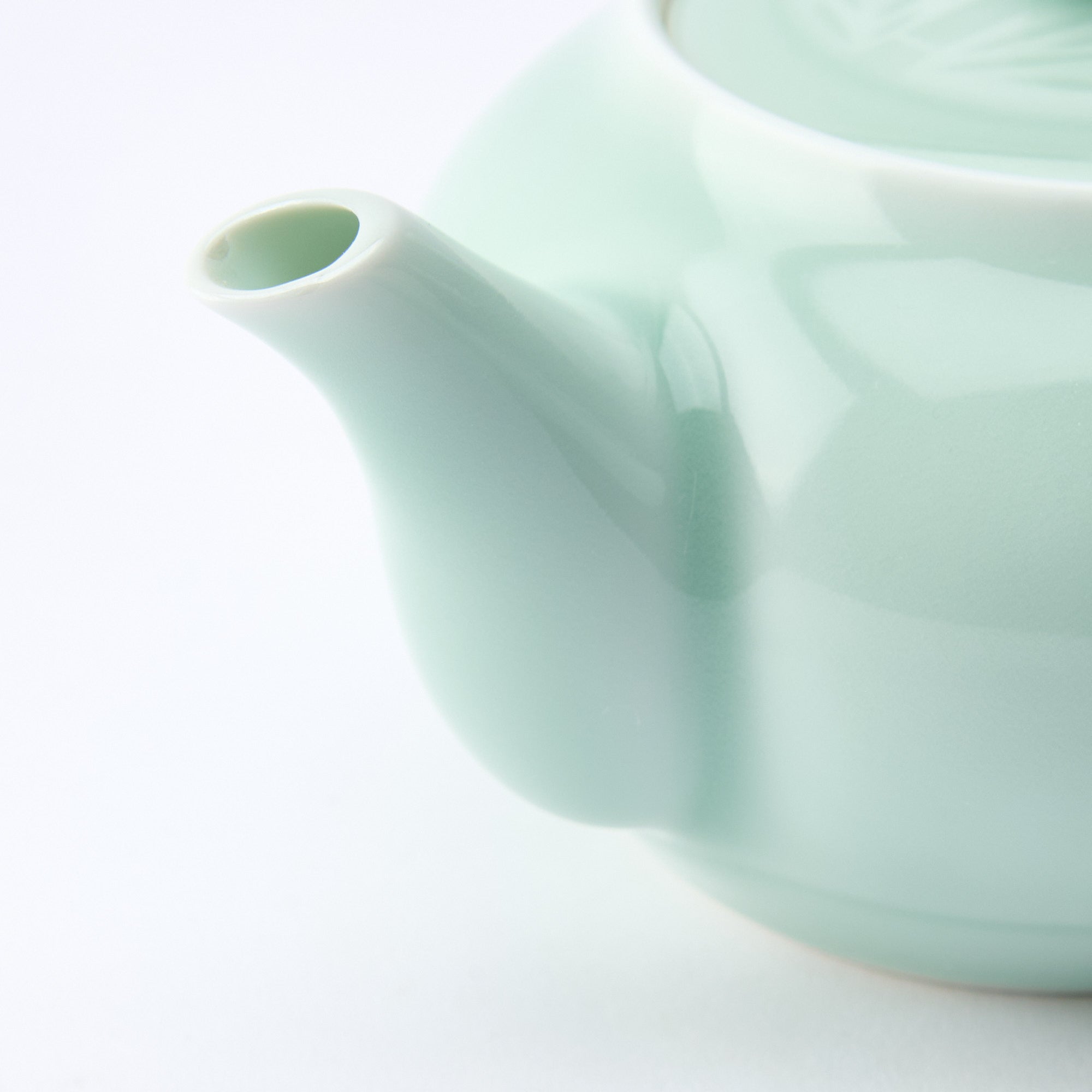
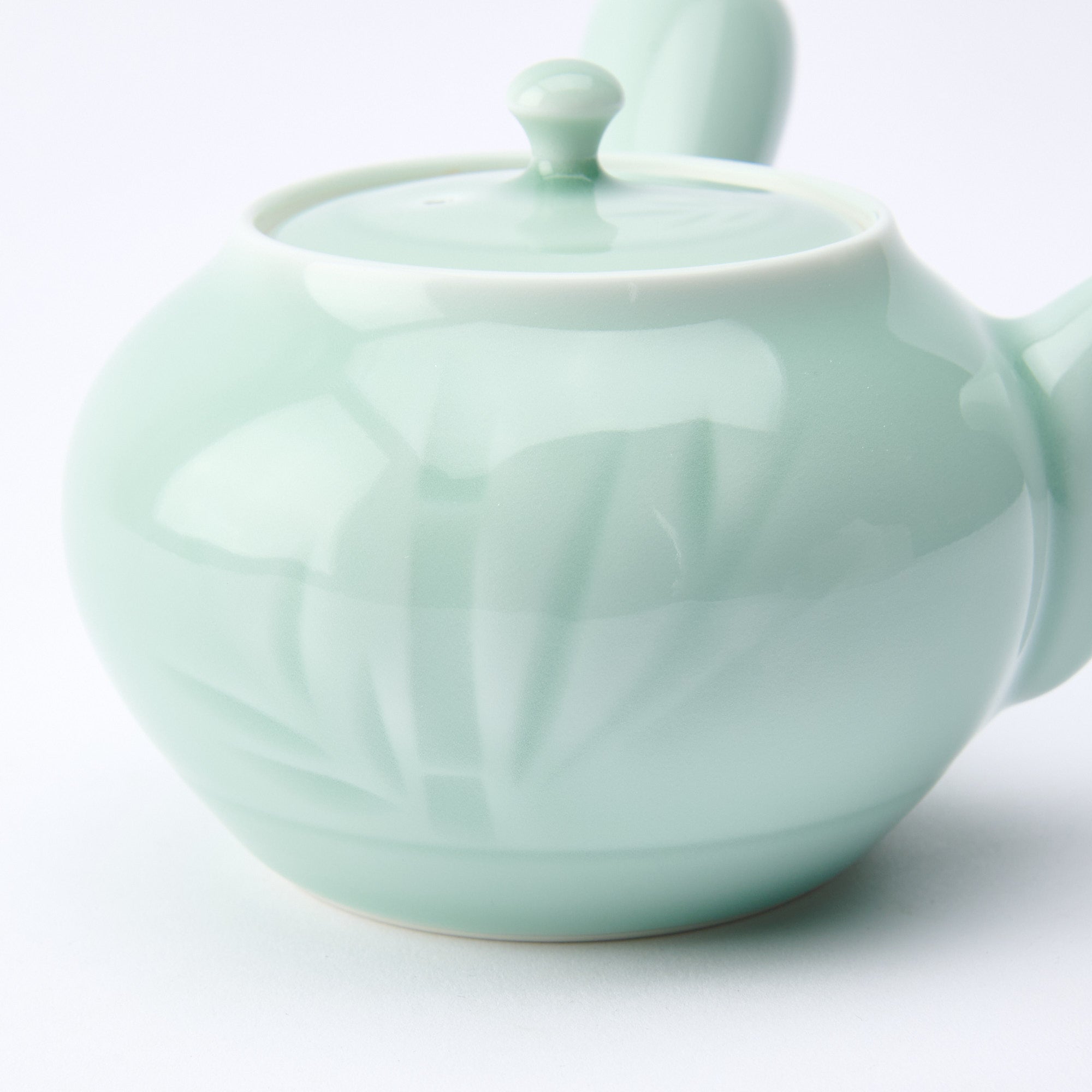
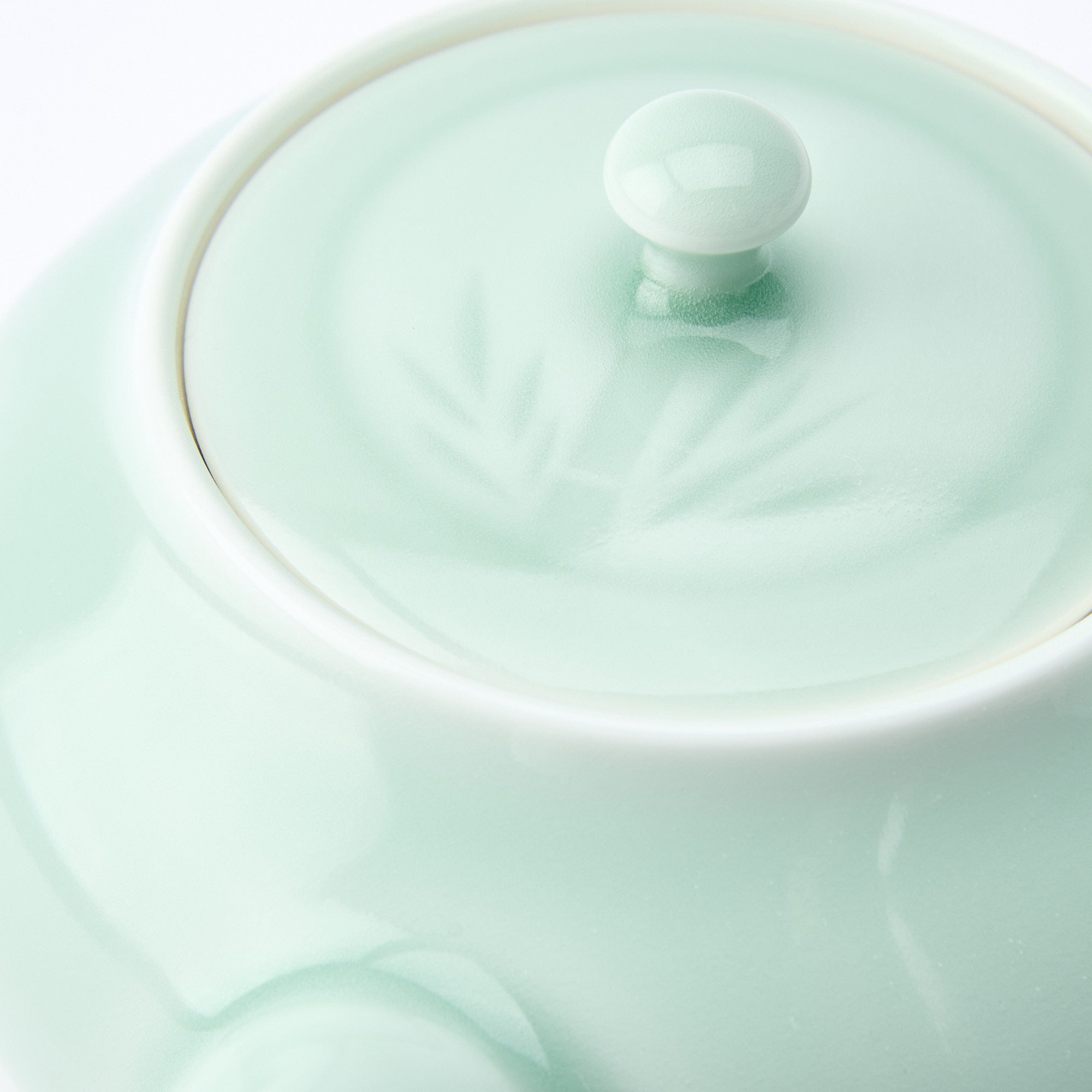
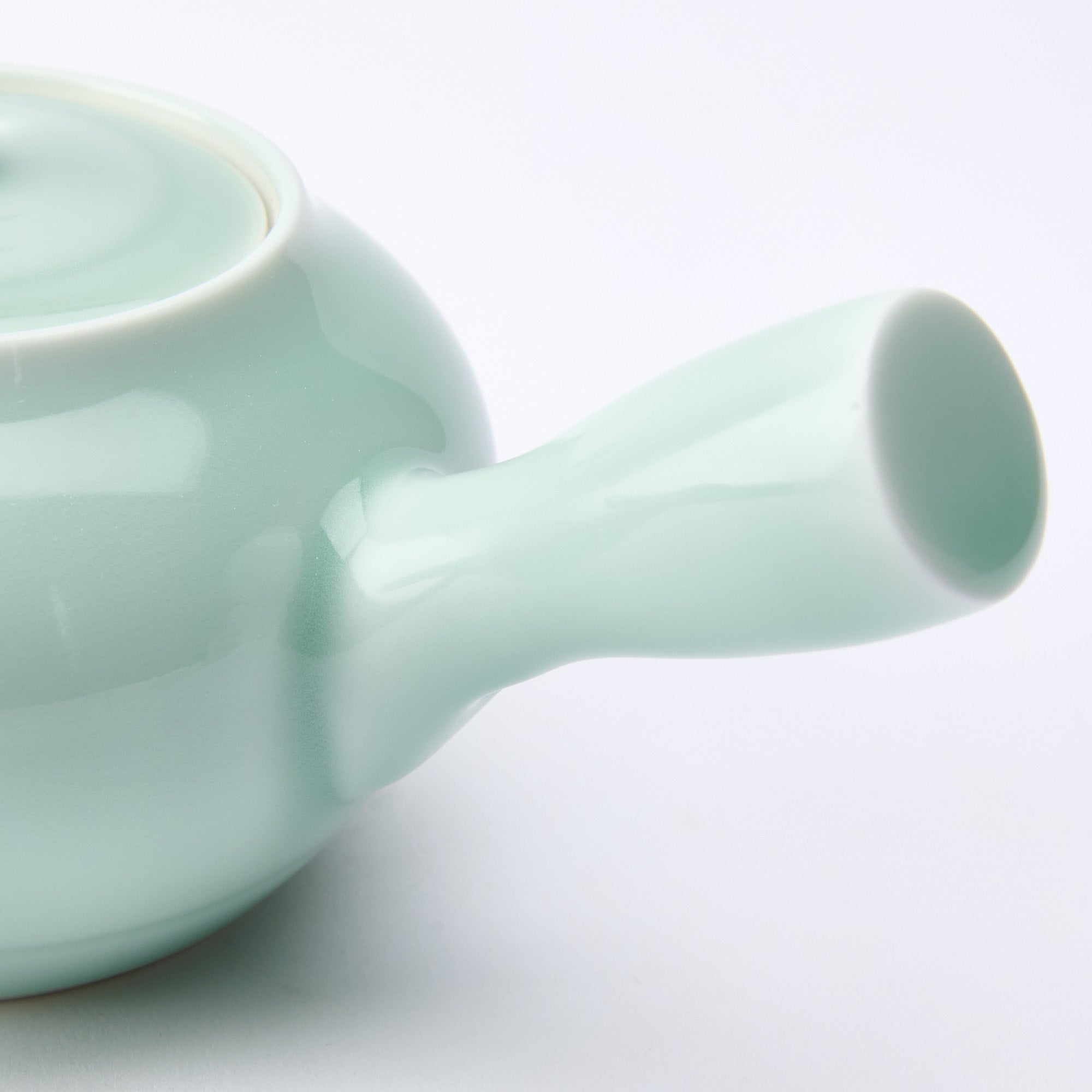
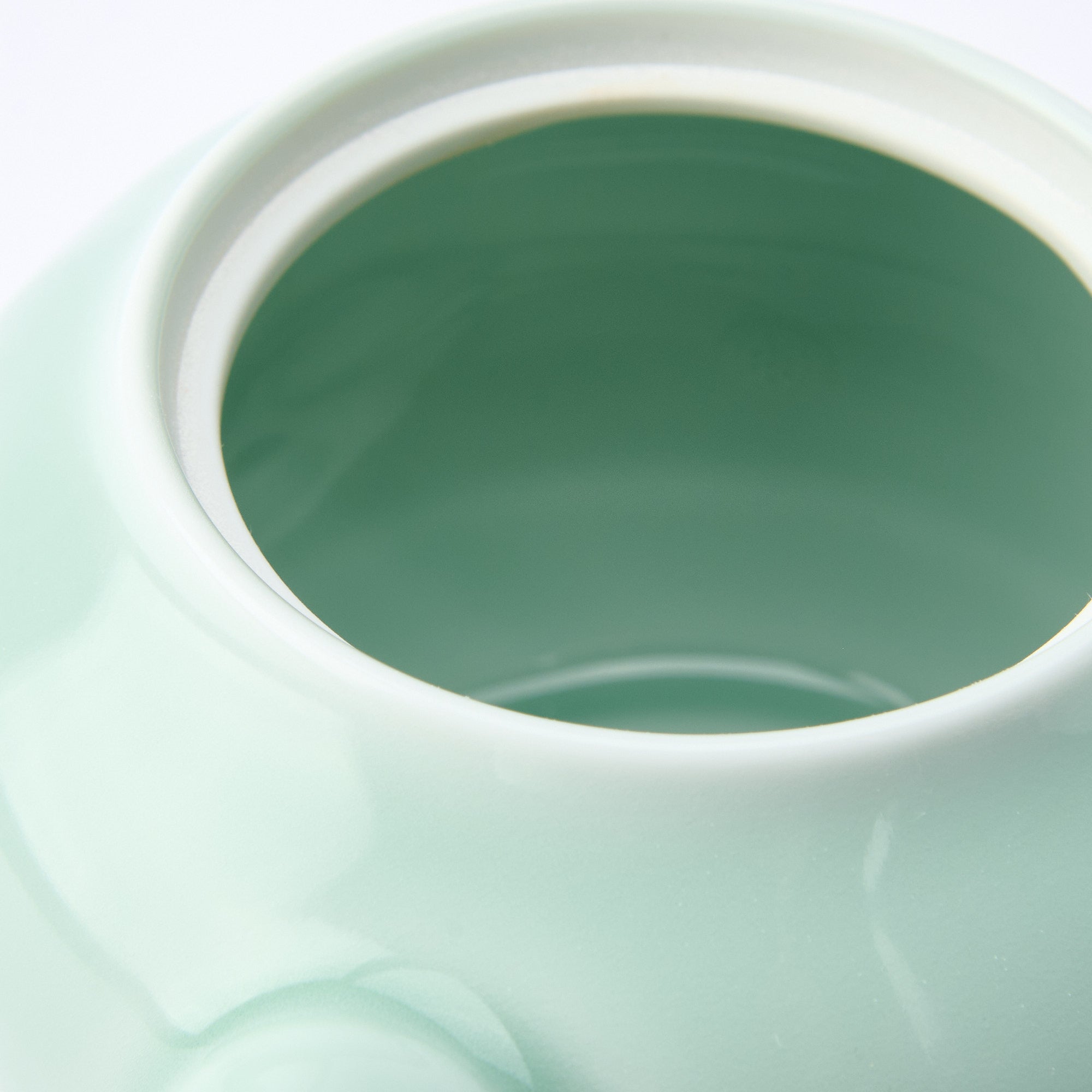
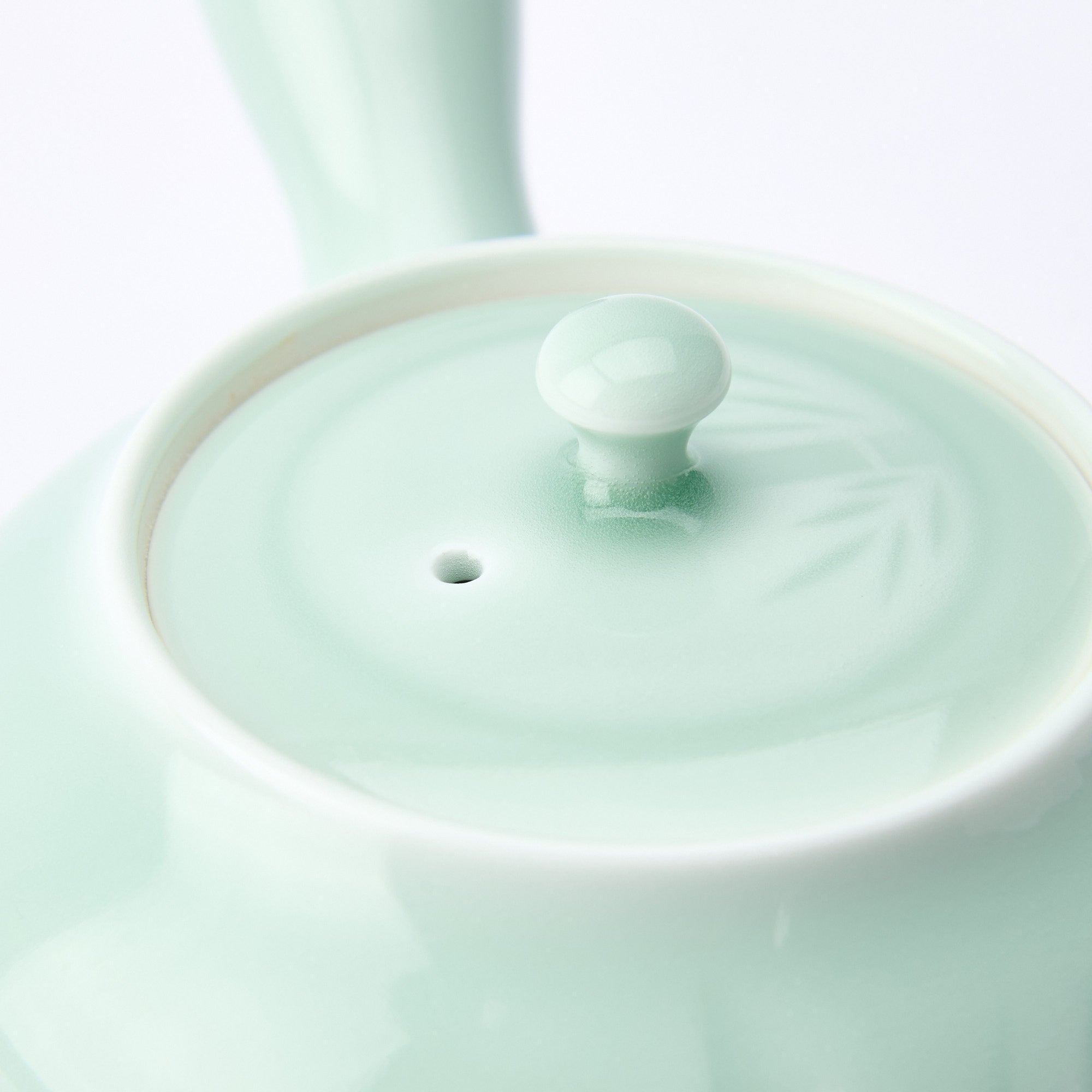
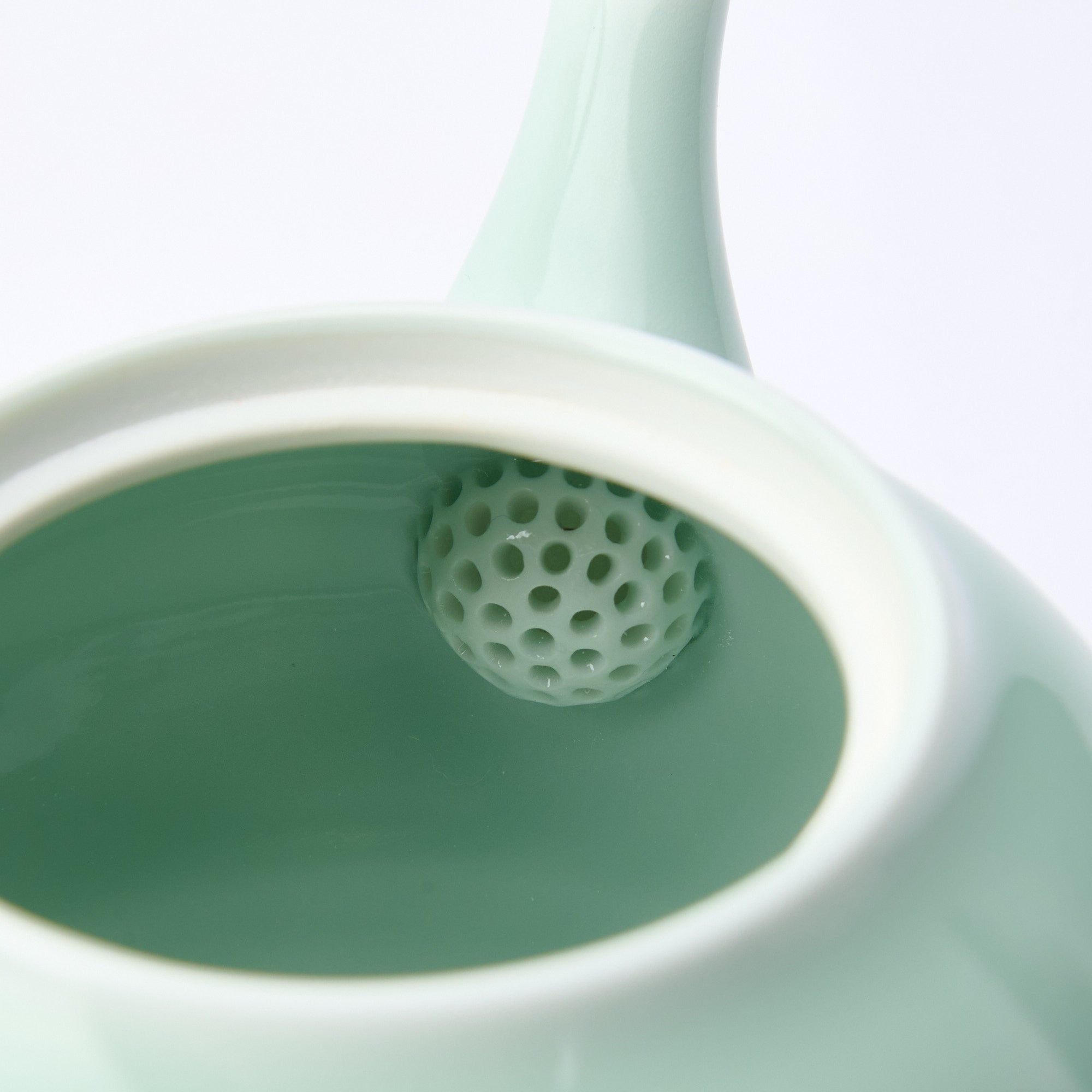
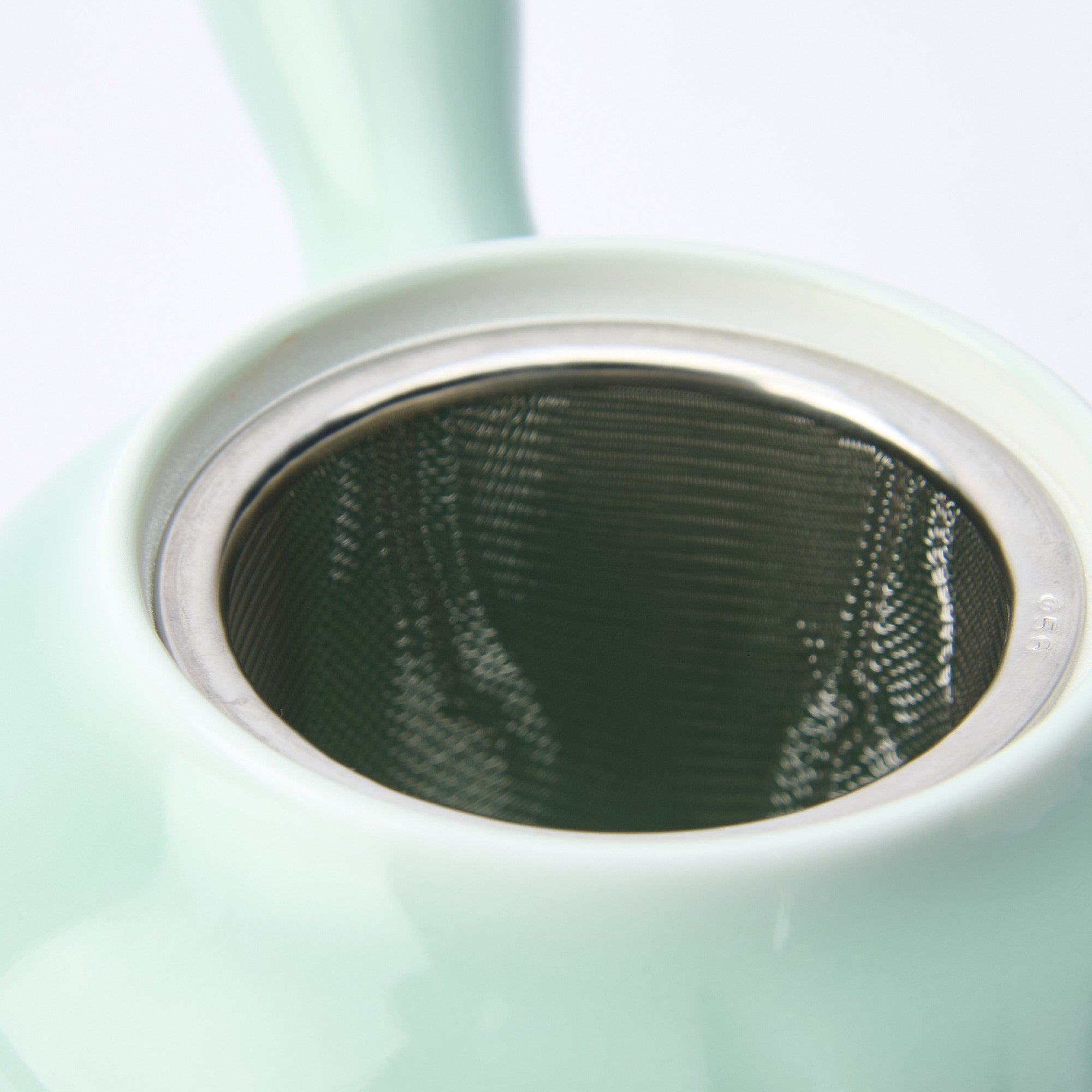
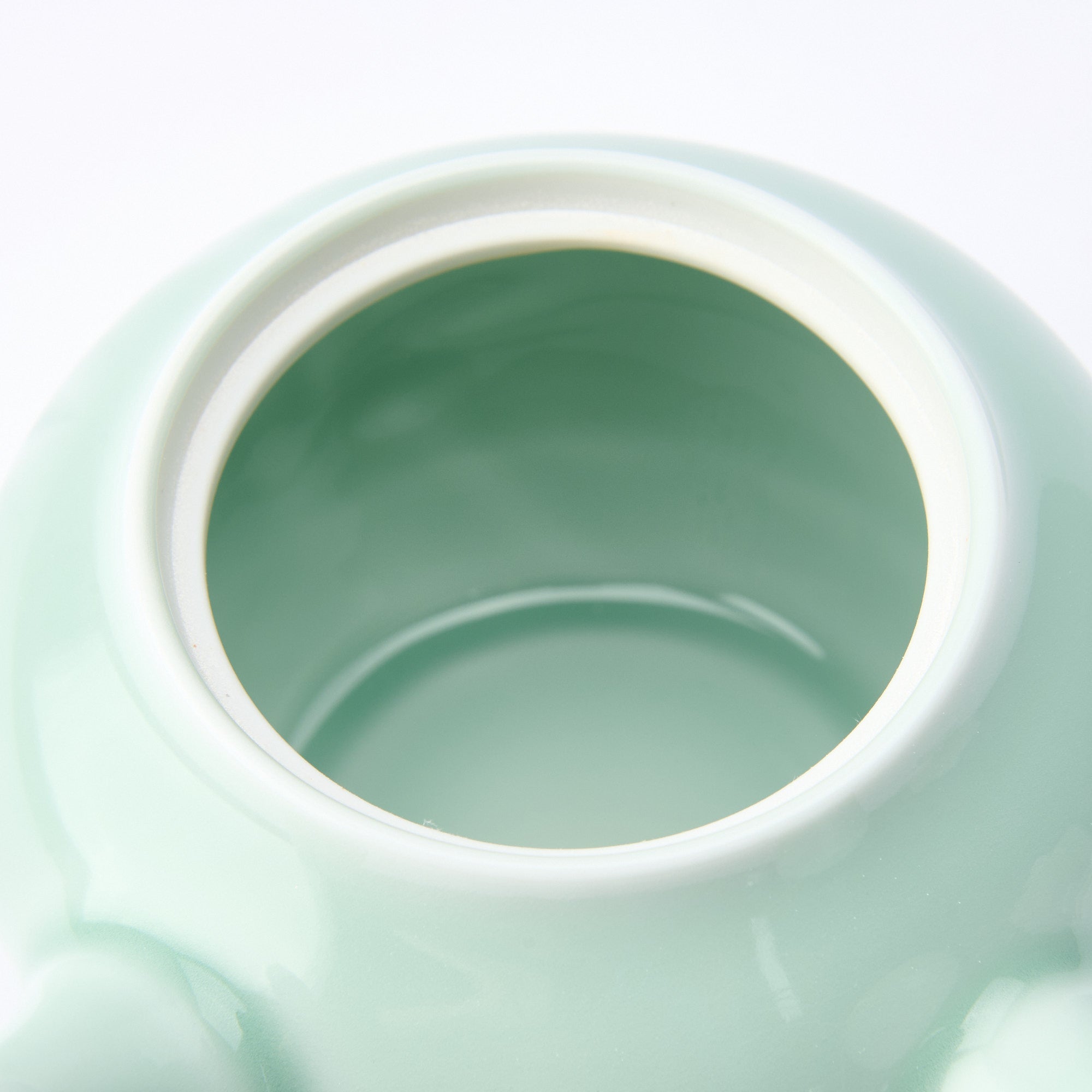
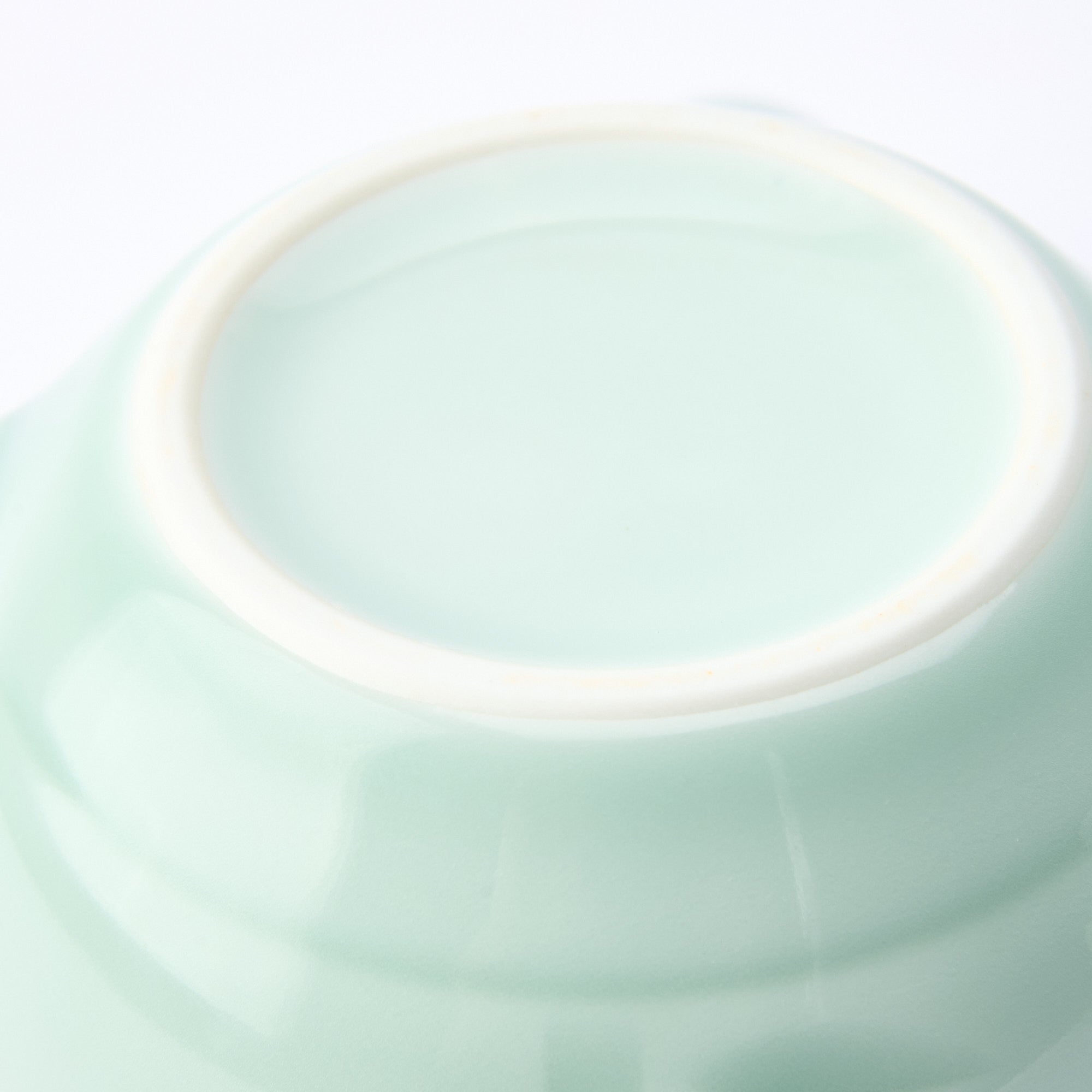
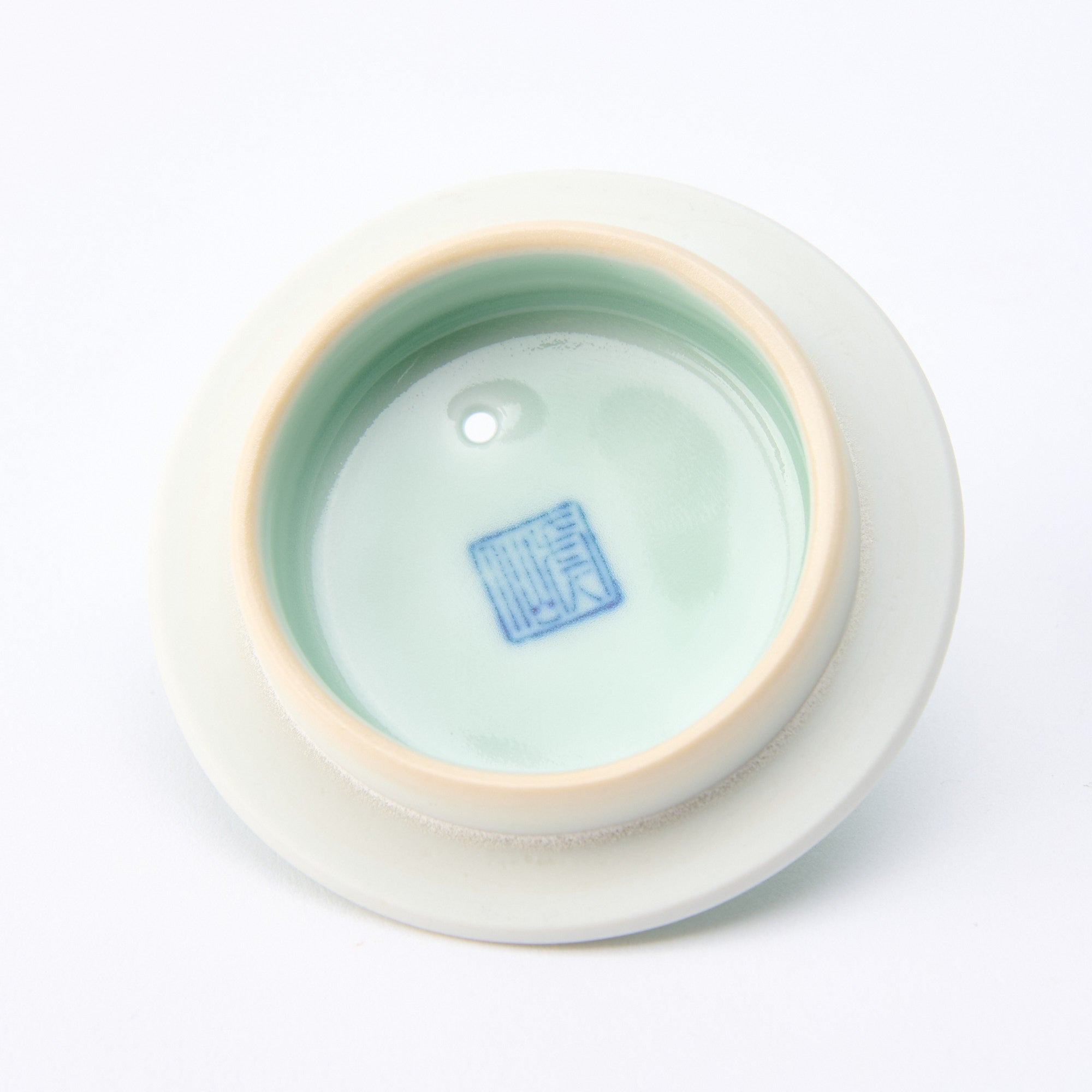
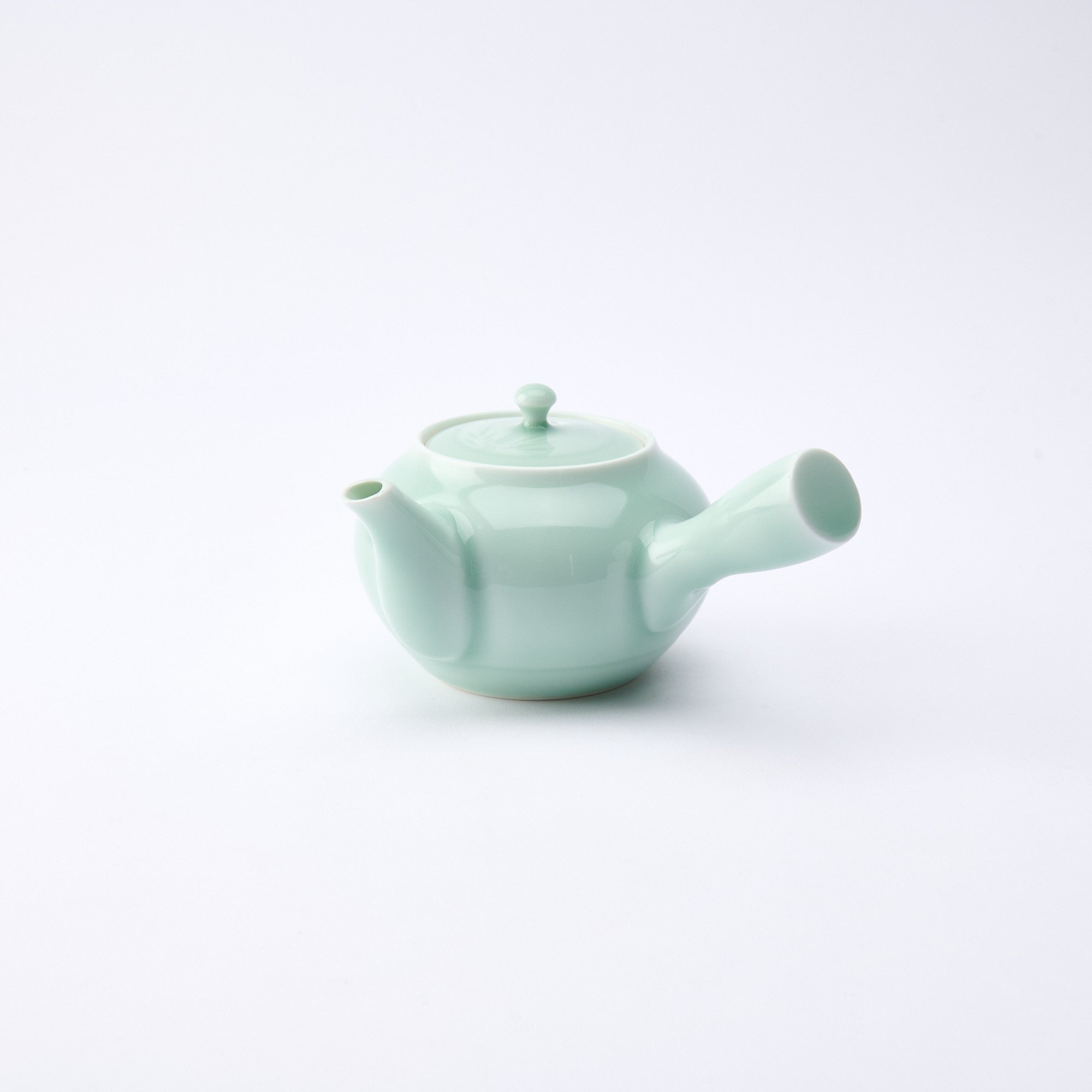
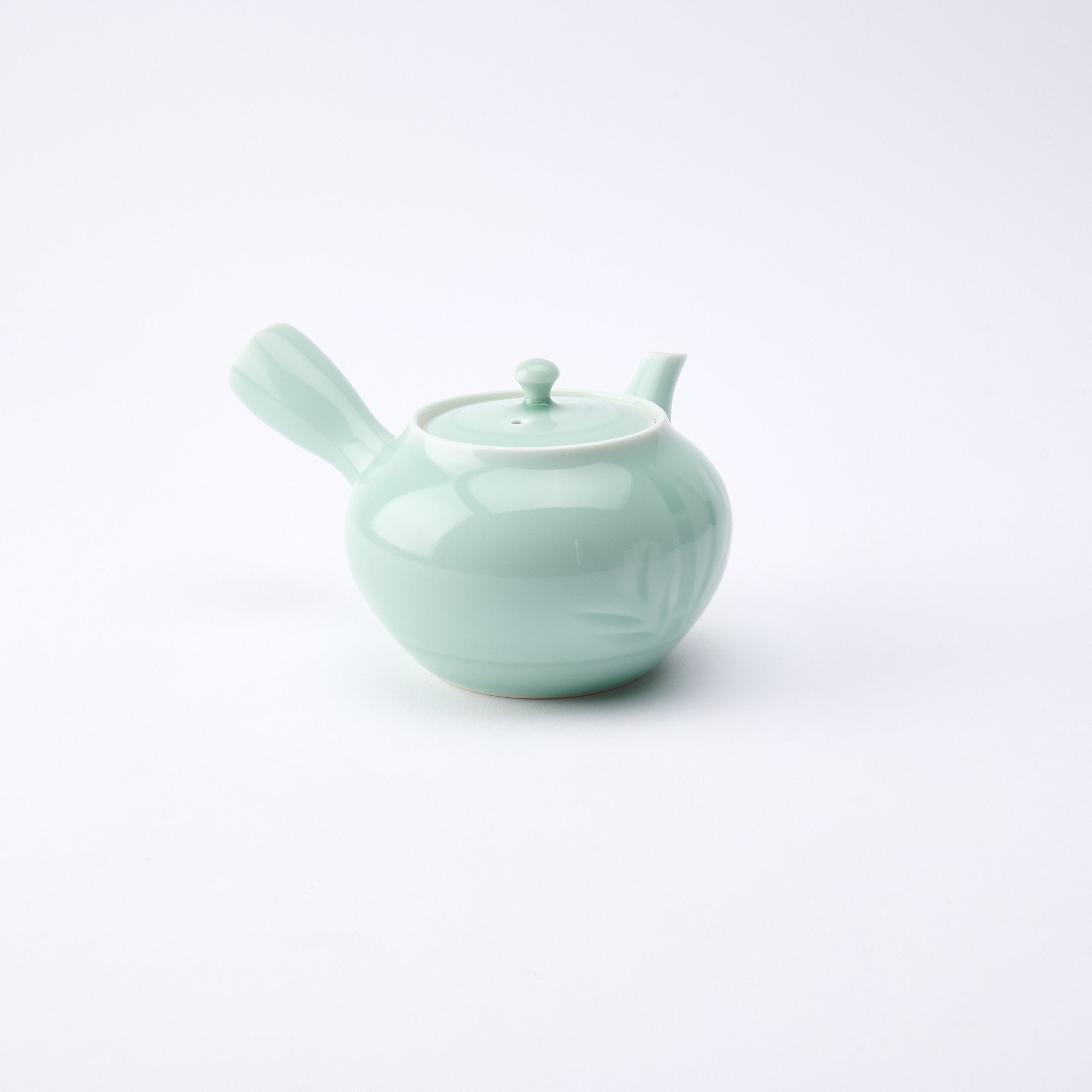
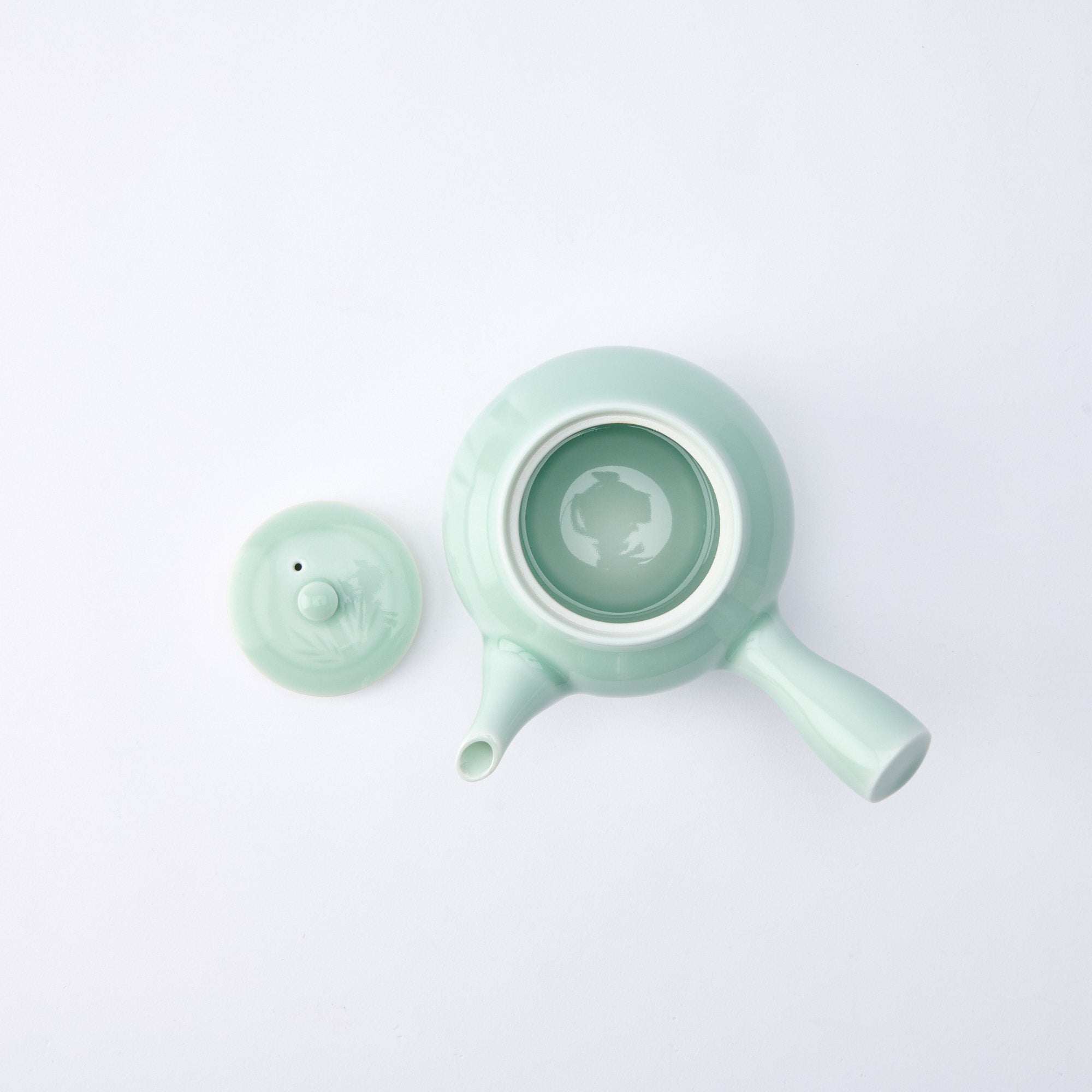
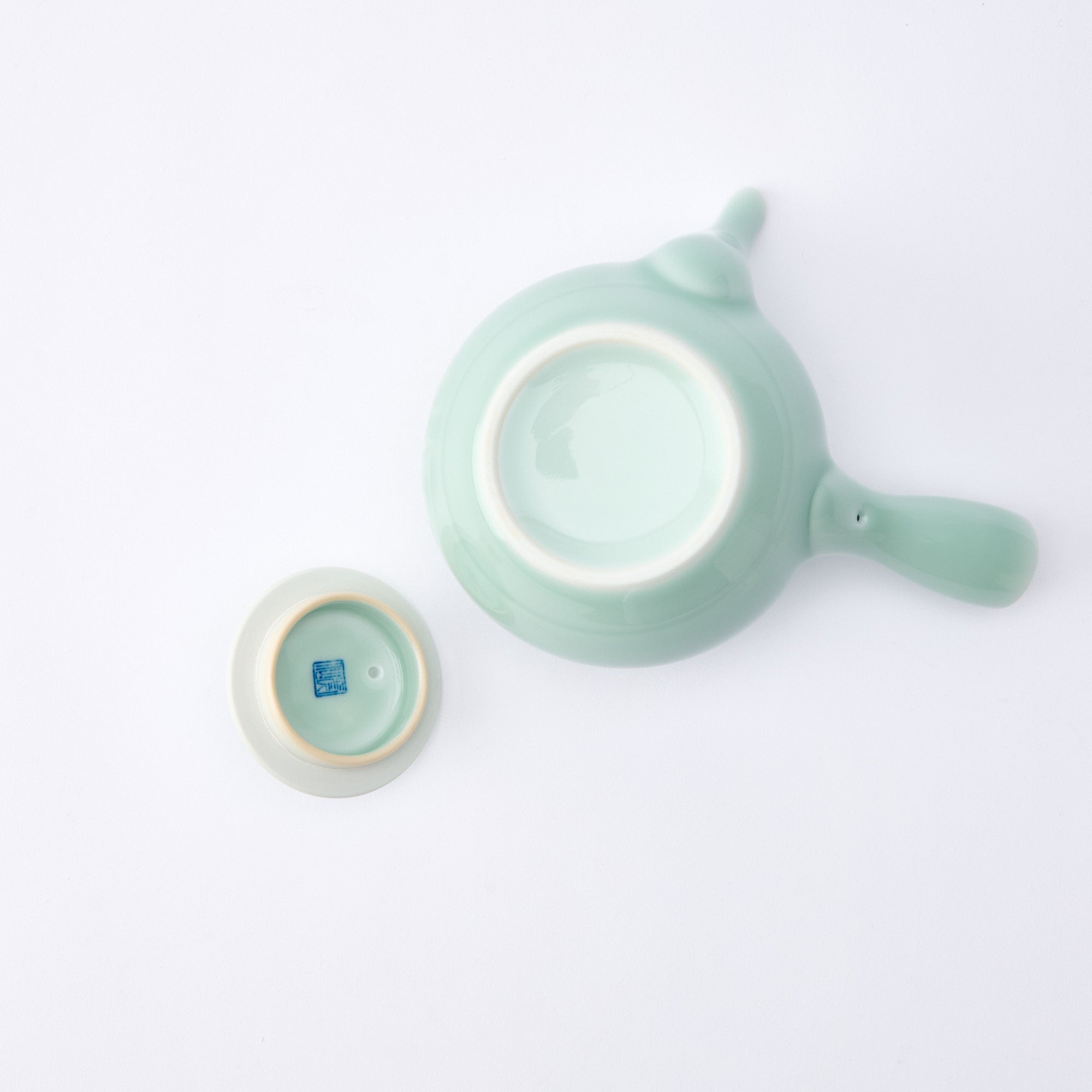
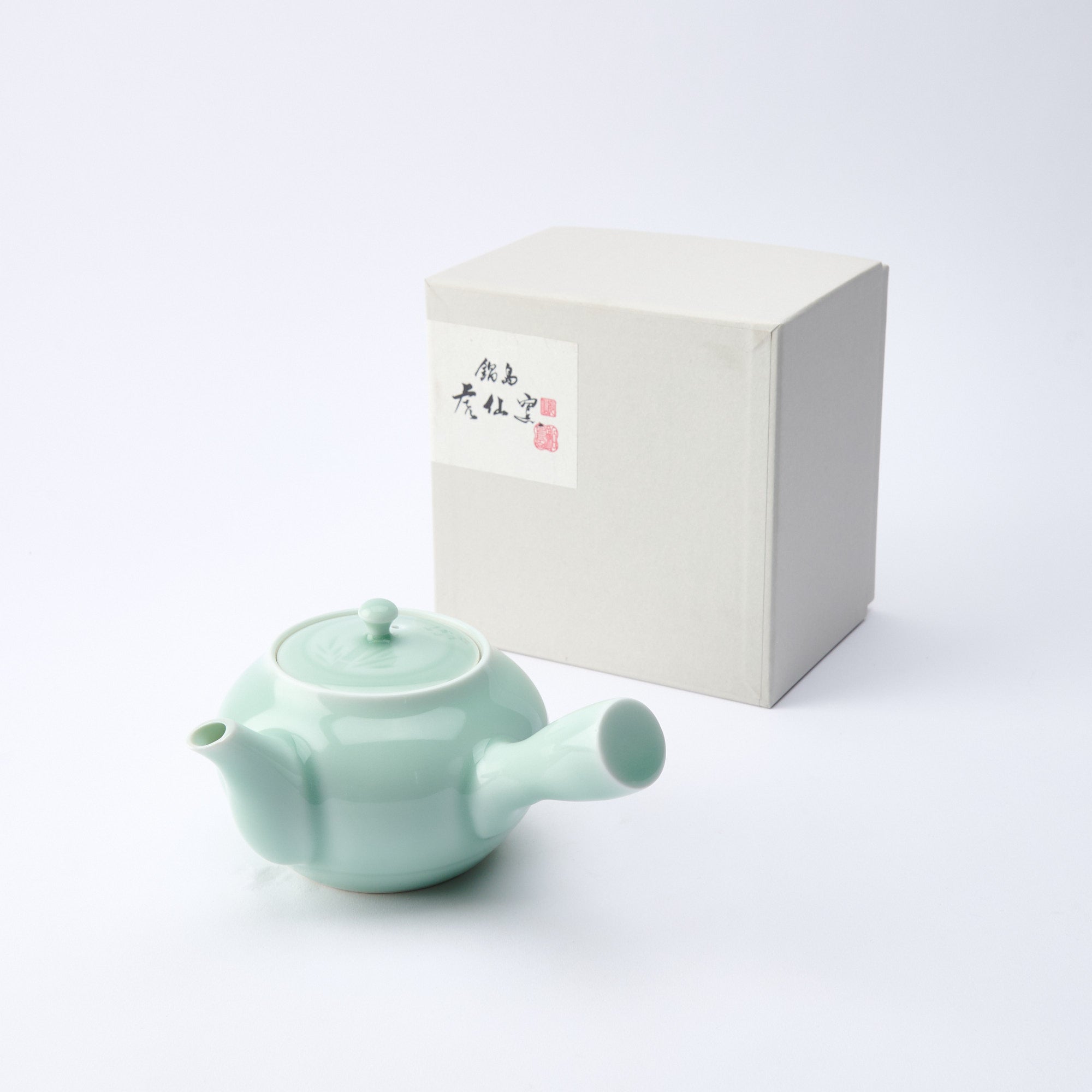
Slender Bamboo Celadon Japanese Teapot
Estimated Shipping Widget will be displayed here!
This ceramic Japanese teapot showcases the serene, pale green hues of Kosen Kiln's original celadon, crafted with natural minerals partially sourced from Okawachiyama. Its subtle elegance invites appreciation with every use.
The combination of celadon’s hues and the bamboo motif creates a refreshing design. Bamboo, which grows tall and straight toward the sky, is believed to bring good fortune and strength. It also symbolizes resilience, as it can withstand the harsh cold of winter and the intense heat of summer.
The shape of this teapot is called maru-gata, known for its versatility in accommodating various types of tea leaves. Its wide opening and curved base make it easy to clean, while the slightly flattened form allows the tea leaves to unfurl fully, extracting a rich depth of sweetness and umami.
Inside, it features both a sasame filter and a removable mesh strainer, ensuring that no tea leaves escape when pouring. Designed for easy pouring and convenience, this teapot is perfect for everyday use and also makes a great gift.
The current third generation, Kawasoe Takahiko, has a vision of "establishing Nabeshima culture" and began research and development of celadon from a different perspective from that of his grandfather. The kiln is working daily with the hope that the future of Nabeshima ware will be enriched 100 years from now.
DES DÉTAILS
| Quantity | 1 |
| Size |
15.0 cm (5.9 in) x 17.5 cm (6.9 in) x H 10.0 cm (3.9 in) including handle |
| Capacity | 350 ml (11.8 fl oz) |
| Weight | 390 g (13.8 oz) |
| Material | Porcelain |
| Package Type | Paper box |
| Microwave | No |
| Dishwasher | No |
Fabricant / Marque
Kosen Kiln est spécialisé dans les produits qui utilisent une variété des trois techniques caractéristiques de la céramique Nabeshima : iro-Nabeshima (émail sur glaçure) , ai-Nabeshima (un truc) , et Nabeshima Seiji (céladon) . Le fondateur, Kawasoe Tameo, s'est consacré à l'étude de la porcelaine céladon, animé par le désir profond de la rendre accessible au plus grand nombre.
La troisième génération actuelle, Kawasoe Takahiko, a pour objectif de « consolider la culture de Nabeshima » et aborde la recherche sur le céladon sous un angle différent de celui de son grand-père. Le four travaille avec diligence chaque jour, œuvrant pour un avenir prometteur de la céramique de Nabeshima.
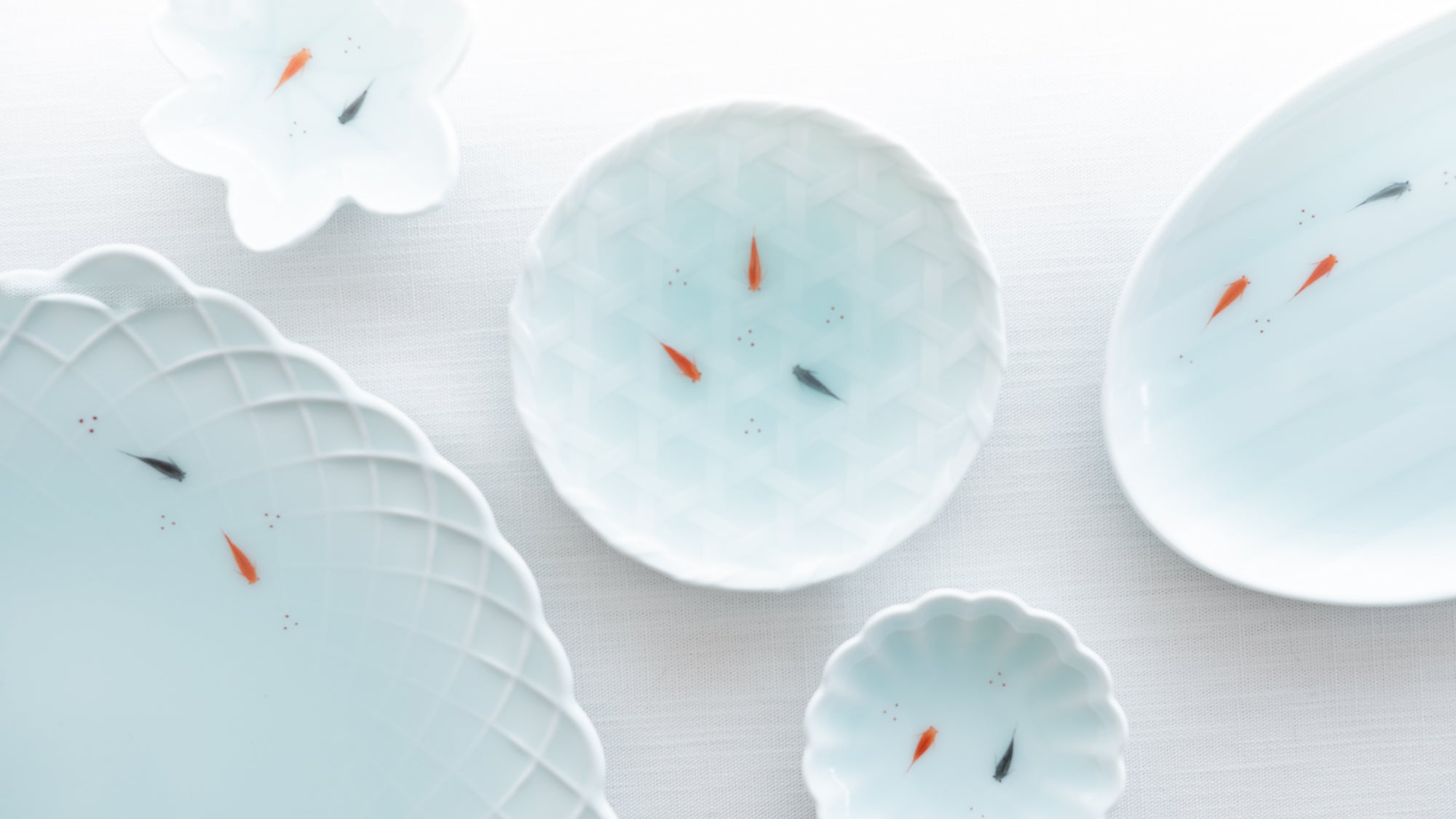
Artisanat
La céramique de Nabeshima est un type de porcelaine fabriquée dans le four du domaine de Nabeshima, géré avec soin. Ce four, géré par le gouvernement sous la supervision directe du domaine de Saga Nabeshima, prospéra au début de l'époque d'Edo (1603-1868) .
Pendant environ 250 ans, la céramique de Nabeshima était réservée uniquement et exclusivement aux shoguns et aux seigneurs féodaux, les fours produisant des pièces exquises dans des styles comme l'iro-Nabeshima (émail sur glaçure) , l'ai-Nabeshima (un truc) , et Nabeshima Seiji (céladon) . Après la fin du système féodal, les fours furent privatisés, accueillant de nouveaux potiers et donnant naissance à ce que l'on appelle aujourd'hui la céramique d'Imari Nabeshima.

Choisir les options



















Estimated Shipping Widget will be displayed here!
Théières japonaises
Vous trouverez forcément la théière japonaise qui vous fera chaud au cœur parmi notre large gamme de styles, que vous recherchiez une théière en céramique, en porcelaine ou en grès, ou une bouilloire classique en fonte. Quel que soit votre type de thé préféré, créez une expérience japonaise authentique avec une théière qui se démarque grâce à notre gamme de formes, de couleurs et de motifs raffinés, classiques ou uniques.
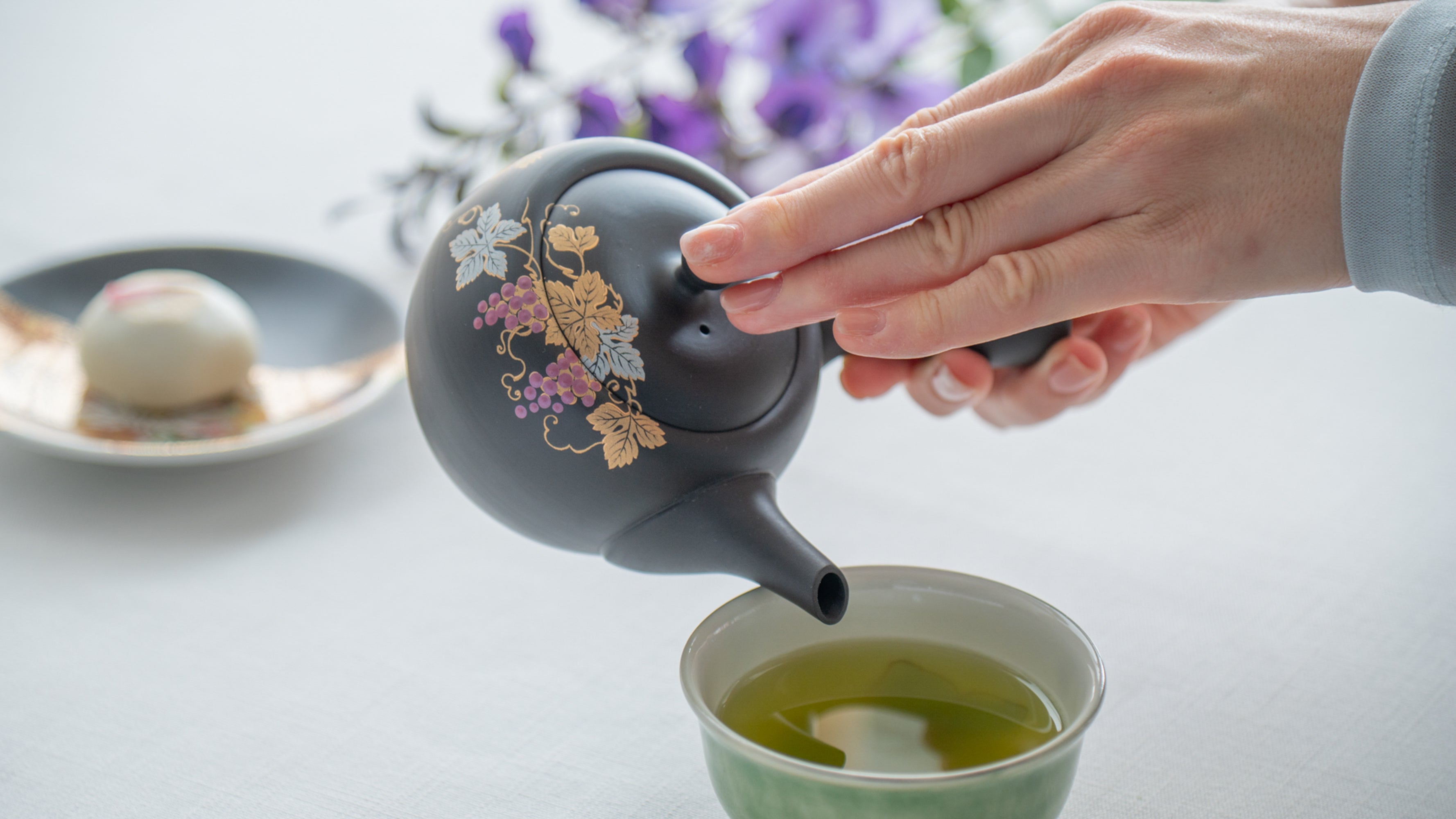
Céladon
La porcelaine céladon est originaire de Chine et a été introduite au Japon au Xe siècle. À cette époque, les céladons chinois étaient considérés comme les produits d'importation les plus raffinés par les classes aristocratiques. Ils adoraient son bleu mystérieux et le surnommaient « couleur secrète » .
La production de céladon a débuté dans la région de Hizen, au nord-ouest de l'actuelle Kyushu, au début de l'époque d'Edo (1603-1868) , et la technique s'est ensuite transmise à Kyoto et ses environs. En 1957, cette technologie artisanale a été reconnue comme bien culturel immatériel national. Le céladon est toujours apprécié et travaillé par de nombreux potiers et artisans aujourd'hui.
